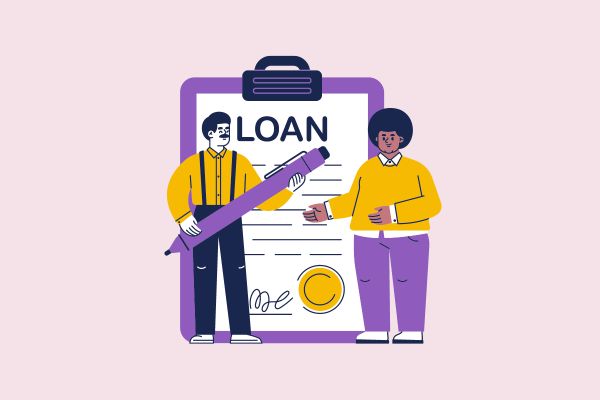Students are Eligible for Student Loans in 2023: What is the Maximum Loan Amount? What Documents are Required for Student Loans for Households?
How much can students borrow in student loans in 2023?
The borrowing limit for students is stipulated in Article 5 of Decision 157/2007/QD-TTg as follows:
Loan amount:
1. The maximum loan amount is VND 800,000/month/student.
2. The Social Policy Bank specifies the loan amount for students based on the tuition fees of each school and living expenses by region but not exceeding the loan amount specified in Clause 1 of this Article.
3. When the state's tuition policy changes and the cost of living fluctuates, the Social Policy Bank, in agreement with the Minister of Finance, submits to the Prime Minister of the Government of Vietnam for consideration and decision on adjusting the loan amount.
However, Clause 1 Article 5 of Decision 157/2007/QD-TTg has been amended by Clause 2, Article 1 of Decision 05/2022/QD-TTg, effective from May 19, 2022. The loan amount for students changes as follows:
- The maximum loan amount is VND 4,000,000/month/student.
Thus, according to the above regulations, the maximum loan amount for students in 2023 is VND 4,000,000/month/student.
Additionally, Clause 1 Article 7 of Decision 157/2007/QD-TTg adjusted by Clause 2, Article 1 of Decision 853/QD-TTg in 2011 stipulates the student loan interest rate at a preferential rate of 0.65%/month.

How much can students borrow in student loans in 2023? What documents are required for student loan applications for households?
What documents are required for student loan applications for households?
The documents required for student loan applications for households are stipulated in Clause 1.1, Article 1, Section II of Guidance 2162A/NHCS-TD in 2007, amended by point a, Clause 3 of Official Dispatch 1485/NHCS-TDSV in 2018, including:
- Loan application form cum capital use plan (form 01/TD) with the confirmation from the school (original form 01/TDSV) or admission notice (original or copy from the book or certified copy).
Additionally, in Clause 1.2, Article 1, Section II of Guidance 2162A/NHCS-TD in 2007, the student loan process for households is as follows:
Step 1: The borrower writes a loan application form (form 01/TD) with the confirmation from the school or admission notice and submits it to the TK&VV Group.
Step 2: The TK&VV Group receives the loan application and conducts a meeting to evaluate the loan application, checks the details in the loan application form, and ensures the loan applicant meets the loan policy of the Government of Vietnam. If the borrower is not a member of the current TK&VV Group, the TK&VV Group in the village will either admit the borrower as a new member or form a new group if conditions permit. If there are only 1 to 4 new borrowers, they will be added to the old group, even if the group already has 50 members. Then, a list of households requesting loans from the NHCSXH (form 03/TD), along with the loan application form, school confirmation, or admission notice, is submitted to the Commune People's Committee for confirmation.
Step 3: After receiving confirmation from the Commune People's Committee, the TK&VV Group sends the entire loan application file to the NHCSXH for loan approval procedures.
Step 4: The NHCSXH receives the file sent by the TK&VV Group, NHCSXH officials assigned by the Director will verify the legality and validity of the loan application file, present it to the Head of the Credit Department (Credit Team Leader), and the Director for loan approval. After approval, the NHCSXH will issue a loan approval result notice (form 04/TD) to the Commune People's Committee.
Step 5: The Commune People's Committee notifies the grassroots socio-political organization (the unit entrusted with lending) and the TK&VV Group to inform the borrower to go to the transaction point in the commune or the NHCSXH office to receive the loan.
Can the loan period be extended for borrowers who do not repay on time as per the final repayment term?
The adjustment of the repayment term, extension of the loan period is specified in Article 11 of Decision 157/2007/QD-TTg:
Adjustment of repayment period, extension of loan period, and transfer of overdue debt:
1. At the final repayment term, if the borrower encounters difficulties in repaying the debt, a written request for a loan extension must be submitted to the Social Policy Bank for consideration; the extension period can be up to half the original loan period.
2. If the borrower does not repay the debt on time as per the final repayment term and is not granted an extension, the Social Policy Bank will transfer the loan to overdue debt. The Social Policy Bank cooperates with local authorities and sociopolitical organizations to take measures to recover the debt.
3. The Social Policy Bank specifies the adjustment of the repayment period, extension of the loan period, and transfer of overdue debt.
According to the above regulations, if the borrower does not repay the debt on time as per the final repayment term and is not granted an extension, the Social Policy Bank will transfer the loan to overdue debt. The Social Policy Bank cooperates with local authorities and sociopolitical organizations to take measures to recover the debt.
LawNet